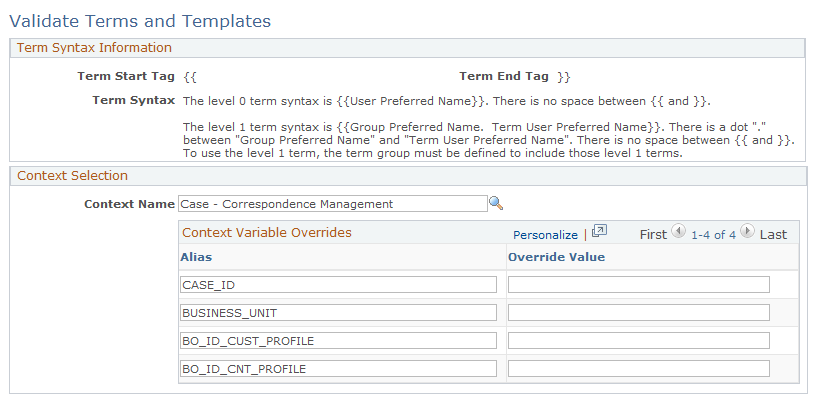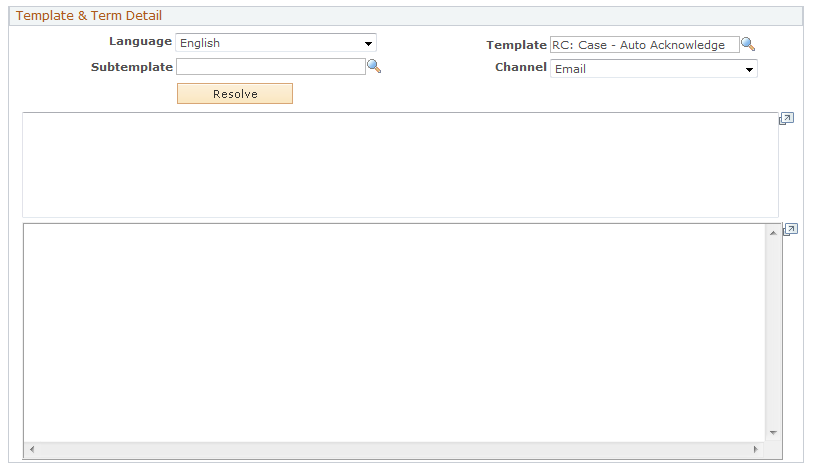Validating Terms and Templates
This section discusses how to validate terms and templates.
|
Page Name |
Definition Name |
Usage |
|---|---|---|
|
RBC_TEST_TERM |
Test term and template resolution. |
Use the Validate Terms and Templates page (RBC_TEST_TERM) to test term and template resolution.
Navigation:
This example illustrates the fields and controls on the Validate Terms and Templates page (1 of 2).

This example illustrates the fields and controls on the Validate Terms and Templates page (2 of 2).

Term Syntax Information
Field or Control |
Description |
|---|---|
Term Start Tag and Term End Tag |
Displays the term start and end tags that you selected on the Correspondence Management Installation Setup page. The default is double curly brackets: {{ }}. |
Term Syntax |
Displays instructional text explaining how to reference terms that represent level zero and level one data. |
Context Selection
Field or Control |
Description |
|---|---|
Context Name |
Select the component to use as the template context during the validation. |
Template & Terms Information
Field or Control |
Description |
|---|---|
Language, Template, and Channel |
To validate a template, select the template definition, its channel (Email, Print, or All), and its language. Note: Email, Print, and All refer to the Email, Print, or All channel specified in the template's definition. Thus, selecting All does not validate any files associated with the Email or Print channel, but only those specified with the All channel. |
Subtemplate |
To validate a subtemplate, select the subtemplate to validate. Alternatively, you can enter terms directly into the long text field that appears below the Subtemplate field. Be sure to wrap terms in the appropriate start and end tags. |
Resolve |
Click to resolve the template, subtemplate, or free-form text that you entered. |
Additional Elements for Validation
At the bottom of the Validate Terms and Templates page, the system displays the results of the term validation process. Messages show each term's resolution method, display the value if the term was resolvable, and display an error message if it was not.